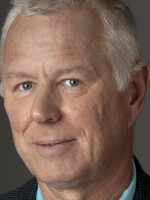When a marine biologist from Australia traveled to a remote string of islands in the Indian Ocean to see how much plastic waste had washed up on the beaches, here's just part of what she found: "373,000 toothbrushes and around 975,000 shoes, largely flip-flops," says Jennifer Lavers of the University of Tasmania in Australia.
And that's only what was on the surface.
The Cocos Keeling Islands make up barely 6 square miles of land, about 1,300 miles off the northwest coast of Australia. It was a good place to measure plastic waste because almost no one lives there. That meant the plastic debris there wasn't local — it floated in — and no one was picking it up. It gave Lavers a good notion of just how much was bobbing around the ocean.
She was flabbergasted.
"So, more than 414 million pieces of plastic debris are estimated to be currently sitting on the Cocos Keeling Islands, weighing a remarkable 238 tons," Lavers says.
There are 27 of these islands, most just a few acres in size. Lavers' team of researchers studied seven of them, mostly in 2017, by marking off transects on beaches and counting all the plastic inside each transect. They multiplied that number by the total beach area of all the islands. Lavers had done this before on other remote islands. "You get to the point where you're feeling that not much is going to surprise you anymore," she says, "and then something does ... and that something [on the Cocos Keeling Islands] was actually the amount of debris that was buried."
Lavers didn't just count the stuff on the surface, she dug down 4 inches into the sand. "What was really quite amazing was that the deeper we went," she says, "the more plastic we were actually finding." What happens is that the sun breaks down the plastic on the surface, and the waves pummel it into tiny pieces and drive it into the sand.
"It's the little stuff that's perfectly bite-sized," Lavers says. "The stuff that fish and squid and birds and even turtles can eat."

In fact, most of the plastic waste was just under the surface. "We estimated that what was hidden below the sediment was somewhere in the range of 380 million pieces of plastic," Lavers says. But it probably won't stay there. Eventually, she predicts, high tides or storms will carry it out to sea.
Lavers describes what her team found in the journal Scientific Reports.
It's becoming increasingly clear that no place on the planet seems immune from plastic debris. Ecologist Chelsea Rochman at the University of Toronto studies microplastics and says different places simply have different kinds of plastic.
Take the Arctic, for example. "Contaminants are transported via air currents in addition to ocean currents," Rochman explains. "And there [in the Arctic], we see high concentrations of small microfibers and small particles, and so, absolutely, you expect different things in different places. And what you find tells you something about where it's coming from."
Rochman says she's not exactly surprised at what Lavers found. "It's just kind of sad to kind of read about it and think, 'Yep, OK, this is becoming, I guess, normal.'
"And we never wanted something like this to become normal."
Copyright 2021 NPR. To see more, visit https://www.npr.org.




